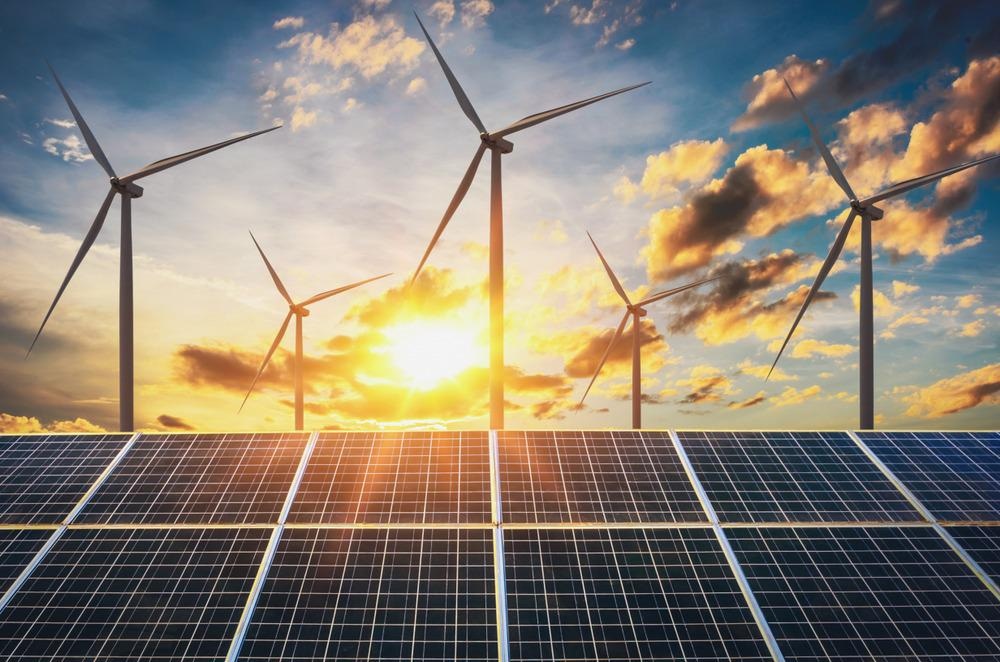Today’s mines are situated in more remote locations, and miners have to dig deeper to access the depleting resources required for today’s consumer-driven world. Remote mining is energy-intensive, with energy required for electricity, haulage and heating across the entire operation. These activities are fueled almost entirely by diesel.

Image Credit: lovelyday12/Shutterstock.com
Diesel is an efficient fuel, but it is dirty and expensive. Furthermore, it is in limited supply and its emissions are damaging to the environment and human health. Consequently, there is a demand for more sustainable mining and improved energy sources to provide power to remote mines.
The industry has a large carbon footprint and is one of the primary contributors to greenhouse emissions, which includes carbon dioxide, carbon monoxide, unburned hydrocarbons, particulate matter, sulfur dioxide, and nitrogen oxides. The industry is working to decrease this by implementing better energy strategies involving renewable energy. However, a lack of a suitable storage system is limiting its rollout.
Renewables and Energy Storage
Underground mining is energy-intensive, with the cost of energy accounting for around one-third of a company’s total cost base. It is worse in remote locations where there is no access to the electrical grid or gas pipelines, so mines are totally reliant on diesel to power operations.
Renewable energy such as wind and solar are popular alternatives to fossil fuels, but there are few examples of their successful implementation in mining locations. Wind power is perhaps the most economically feasible option. Although it has a high upfront cost, it could represent significant savings in terms of finances, fuel and emissions.
The power generated is determined by wind speed and varies depending on location. However, clean energy systems have been unable to provide enough power for off-grid mining, nor can they continually provide power due to their intermittent nature. A way to store the excess power generated is needed; this could be in the form of a battery bank, fuel cell or hydrogen.
If wind power is higher than demand, the power may be stored in a battery bank or fed to an electrolyzer to generate hydrogen. This is then stored for use in haulage or heating. If the wind power is lower than the demand, the demand shortage is ratified by the battery bank. Fuel cells may also be used to cover any power shortage in case of turbine or battery failure to supply a full electrical load to the mine.
Hydrogen Storage Systems
Hydrogen-based storage systems are among the cheaper means of bringing renewable energy to mines. These standalone systems consist of an electrolyzer, which splits water into hydrogen and oxygen, a hydrogen tank and a fuel cell. Surplus energy drives the electrolysis reaction which creates hydrogen which is stored in the hydrogen tanks and used by the fuel cell to meet power shortages.
Employing hydrogen-based storage systems could cut carbon emissions from gas-based mine vehicles by around 90%, and decrease primary energy significantly. However, it is unlikely that a standalone hydrogen storage system will be able to meet the entire energy demand of a mine. There are many examples in the literature of such hydrogen systems being used in relatively small-scale applications such as residential or office settings – but not an entire mine.
Furthermore, hydrogen storage systems need to be financially competitive compared to conventional diesel-fueled mines, which use diesel to power electricity loading, heating – which also makes use of heat recovery systems - and haulage.
Hybrid Systems
To meet 100% of the off-grid power demands of an operational mine, a hybrid system is needed. A novel integrated renewable energy multi-storage solution which uses wind power as the primary energy source and combines batteries, fuel cells and thermal storage could help decrease carbon and greenhouse gas emissions.
This module-based design means companies can select and custom-build their energy system. This may take the form of a battery-fuel cell-hydrogen truck, a battery hydrogen truck, or fuel cell-hydrogen truck.
Studies suggest that very high fluctuated wind power generation conditions tend to favor the fuel cell storage system, while battery storage systems are more suitable for a fast-balance response. This is because batteries are ideal for short-term, small-scale storage and discharge, while hydrogen offers long-term, large-scale storage solutions.
The payback of such renewable systems depends on the lifetime of the mine. Hydrogen storage systems provide comparably faster payback than battery storage systems because of the lower capital expenditure.
Novel integrated renewable thermal systems have a high upfront cost but are a promising prospect with regards to the cost of energy and payback period. A combination of battery and fuel cells as an energy storage system will give a better financial return compared to battery or fuel cell systems.
The Future of Sustainable Mining
Sustainable mining is increasingly important in today’s eco-conscious world; it can be achieved through implementing an integrated renewable energy multi-storage solution that features a number of different technologies, including harnessing wind power, to power remote mining operations.
References and Further Reading
Kalantari, H. et al. (2020) Hybrid Renewable Hydrogen Energy Solution for Application in Remote Mines. Energies. https://www.mdpi.com/1996-1073/13/23/6365/htm
Disclaimer: The views expressed here are those of the author expressed in their private capacity and do not necessarily represent the views of AZoM.com Limited T/A AZoNetwork the owner and operator of this website. This disclaimer forms part of the Terms and conditions of use of this website.